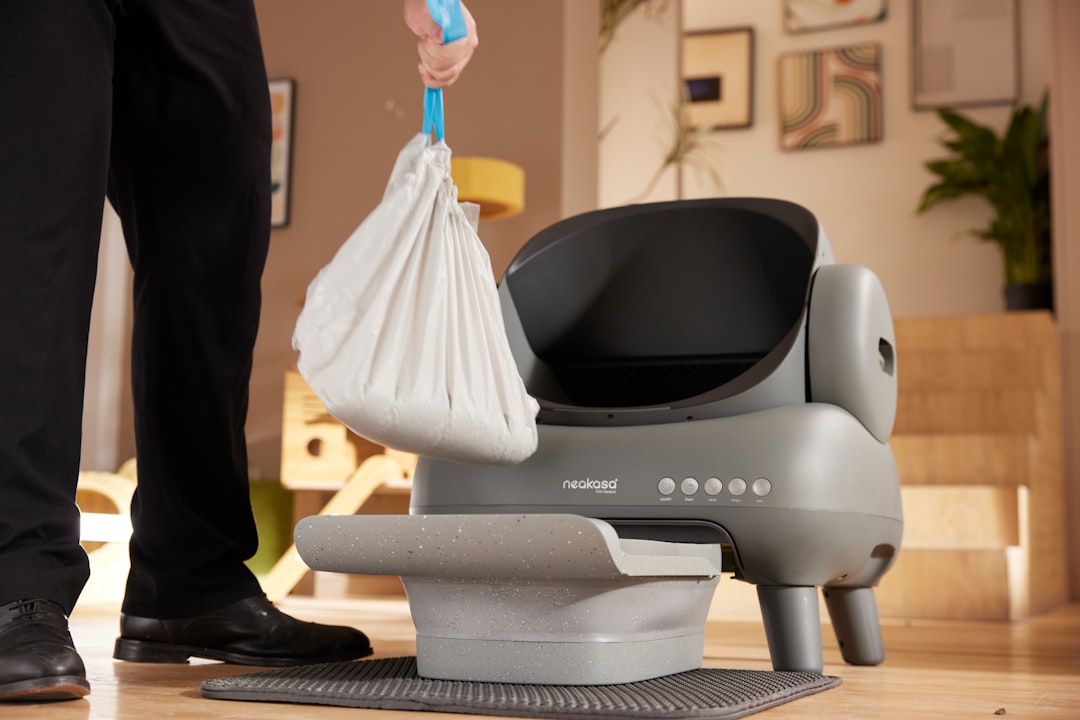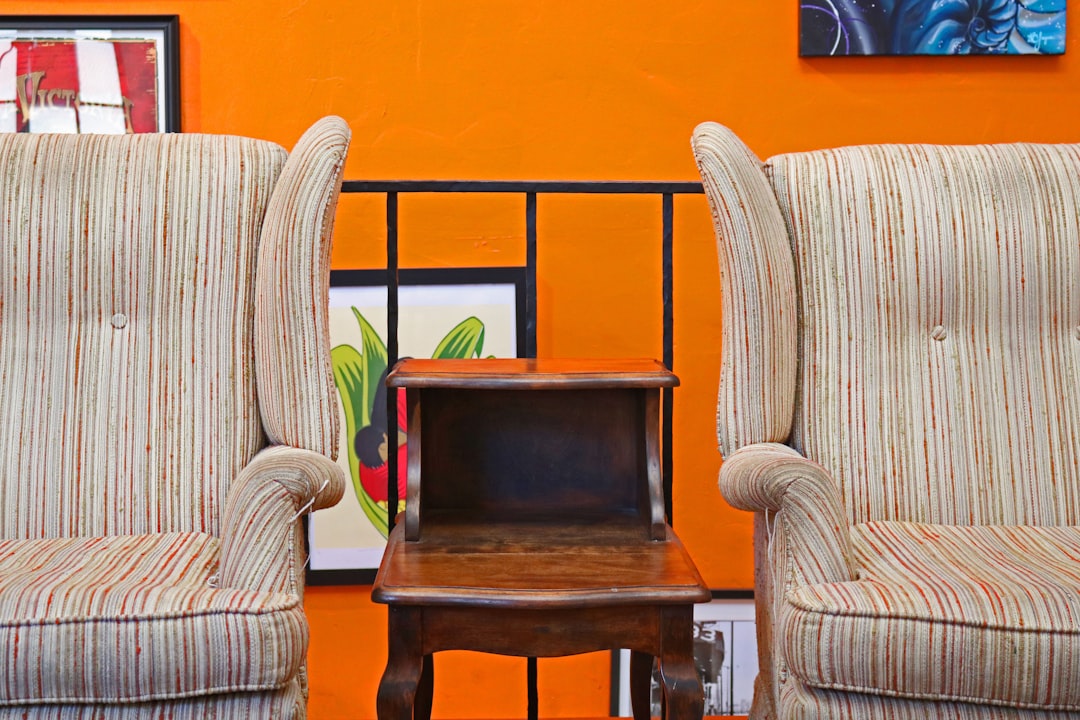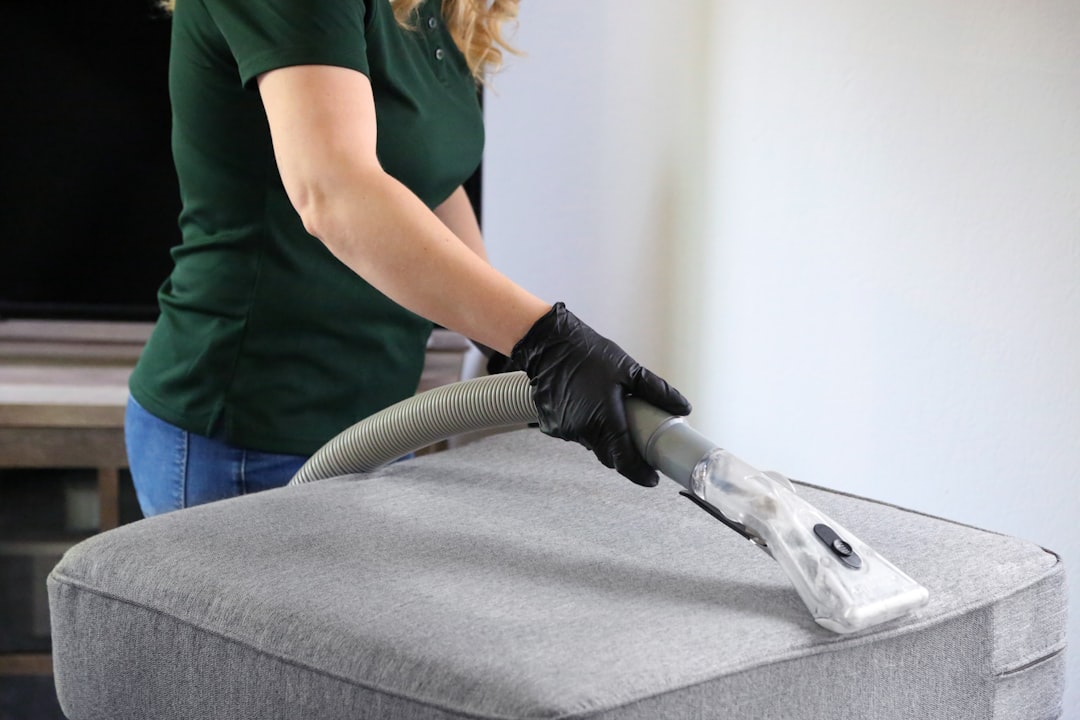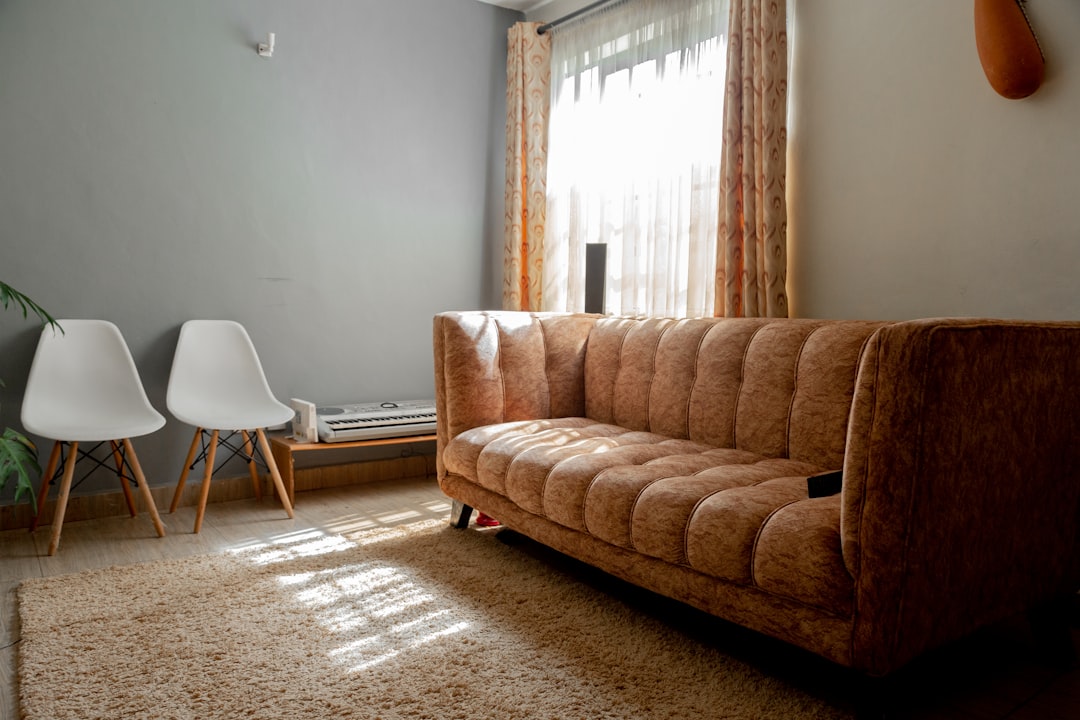

Engage prospects with a scan and streamline customer engagement with FREE QR code marketing tools by Sona – no strings attached!
Create a Free QR CodeFree consultation

No commitment

Engage prospects with a scan and streamline customer engagement with FREE QR code marketing tools by Sona – no strings attached!
Create a Free QR CodeFree consultation

No commitment
In today’s digitally driven world, QR codes have evolved from a novelty to a strategic powerhouse for bridging offline engagement with online action. For upholstery cleaning services, they create a fast, friendly way for prospects and customers to book, request quotes, review services, and access care guides without downloading an app or typing URLs. The result is fewer lost leads and a clearer picture of what moves people from interest to purchase.
This guide shows how to use QR codes across acquisition, service delivery, and retention touchpoints to capture buyer intent in the moment, attribute results, and automate follow-up. You will learn how to replace analog touchpoints like paper forms and untracked flyers with measurable, conversion-focused workflows that scale. Where appropriate, we reference Sona QR’s product overview, a platform designed to create, manage, and measure QR codes so your team can execute confidently and optimize quickly.

For upholstery cleaning services, missing out on leads due to incomplete tracking or manual processes is a frequent growth limiter. Paper notes never entered into a CRM, phone numbers scribbled on work orders, or flyers with no unique tracking all lead to slow follow-up and guesswork. QR codes change that by turning every physical touchpoint into a direct action and a recorded data point that updates your systems in real time.
Start by replacing outdated materials with QR-enabled alternatives. Appointment cards with a code to confirm or reschedule, invoices linking to a review form, or van signage inviting instant quote requests all make it easy for prospects to act and for your team to measure performance. For example, a crew can leave a door hanger after a job with a QR code that opens an aftercare guide and a one-tap booking path for additional rooms, stain protection, or fabric deodorizing. Scans flow into your CRM, trigger alerts, and fuel automated follow-ups so potential revenue is not left on the table.
To implement effectively, define what success looks like before you print. For conversions, monitor scan-to-form rates and scan-to-booking rates by campaign, creative, and location. For engagement, track time on page and repeat scans for educational content such as fabric care guides. Sona QR can help by generating dynamic codes, centralizing performance data, and enabling company-level identification where appropriate. With these building blocks in place, QR codes become reliable growth accelerators rather than one-off experiments.

A persistent challenge in this industry is the inability to connect physical marketing assets to digital engagement. You may invest in door drops, vehicle wraps, or local sponsorships, yet visibility into which assets generated real demand is limited. Traditional tracking methods also add friction for the user, which leads to drop-off between awareness and action. QR codes solve these problems by making every touchpoint clickable in the physical world and measurable in your systems.
QR codes are valuable because they create a direct path from offline interest to online outcomes such as quote requests, bookings, or reviews. They offer speed and simplicity for the customer and end-to-end attribution for the business. For a deeper look at connecting print to revenue, see Sona on offline attribution. Dynamic QR functionality allows you to update destinations after printing, which is especially useful for seasonal offers, rotating discounts, or new service bundles. As a result, your print assets stay relevant longer and continue to perform without reprinting costs.
When QR codes sit on appointment cards, invoices, or leave-behinds, they become trusted touchpoints that customers return to at the right moments: booking a follow-up cleaning, leaving a review while the experience is fresh, or learning how to maintain fabrics to extend results. The accumulated data then guides smarter spending and better customer journeys.
The formats you choose should align with your goals, your audience, and your typical physical placements. In upholstery cleaning, the most useful formats connect customers to booking experiences, information-rich destinations, and simple communication options that capture intent fast.
With Sona QR, you can generate and manage all of these formats in one place. Dynamic QR options let you change destinations later, while central dashboards track which formats resonate most with specific audiences such as homeowners, property managers, or commercial facilities teams.

Growth in upholstery cleaning is often limited by the inability to capture and act on buyer interest in real time. You might have potential customers glancing at your van in a traffic light queue, reading your door hanger while walking in from work, or inspecting your equipment at a home show. Without a clear, immediate path to act, many of these moments fade without a trace. QR codes transform these micro-moments into measurable opportunities.
Start by mapping your physical presence. Identify the places where your brand is most visible and the moments when customers are most receptive to acting. Then add QR codes with benefit-led calls to action that match the context. For example, on a technician’s uniform badge, offer "Scan for same-week appointments." On the invoice, "Scan to save 10 percent on your next upholstery refresh." On a rental community bulletin board, "Property managers: scan for multi-unit pricing." Each placement should be specific to the environment and the audience likely to see it.
As you deploy, test placement and message variations. Measure scan rates by asset, daypart, and neighborhood. Use Sona QR or a similar platform to visualize where the highest-value scans originate. Use the findings to double down on your best placements and retire underperformers.

There are specific moments in the upholstery cleaning journey where QR codes reliably increase engagement and conversion. By planning these use cases intentionally, you will reduce drop-off and improve the customer experience at the same time.
Adopting these workflows closes the action gap between physical service and lasting client relationships. Many teams see scan-to-form conversion rates in the range of 15 to 30 percent for well-designed, mobile-optimized pages and a two to three times lift in review volume when QR-based review requests are timed within 24 hours of service.
Every QR scan is a signal that carries context: where it happened, when it happened, which asset was scanned, and what the person wanted. That context can be used to build high-value audience segments for retargeting and personalized follow-ups.
Segment your QR campaigns by funnel stage, by use case, and by audience type. For example, a scan of a "Compare fabric protection plans" code on your brochure indicates consideration. A scan of "Book now for weekend availability" on an invoice indicates purchase intent. With Sona QR, you can tag each scan by campaign, location, time, and action, then sync these signals into your CRM or ad platforms. This lets you send relevant emails or SMS messages, create custom ad audiences, and alert sales teams when high-fit prospects engage. For deeper tactics, see Sona’s retargeting playbook.
By building these segments from real behavior instead of assumptions, you reduce waste, improve conversion rates, and create a more helpful experience for customers who prefer relevant content over generic blasts.
QR codes should not live in isolation. They are connectors that unify the physical and digital halves of your marketing so you can engage people in the moment and measure outcomes across channels.
Integrate QR codes wherever you already reach your audience offline. For upholstery cleaners, this often includes neighborhood mailers, storefront signage, service vans, door hangers, and event booths at home shows. Online, use QR overlays in video ads or streaming spots and incorporate scannable codes in social content to convert attention into actionable leads. Manage it all with a centralized platform like Sona QR so codes, campaigns, and data stay consistent and easy to optimize.
QR codes serve as the offline onramp to your digital marketing engine. They also unlock a new layer of data collection across channels that were once difficult to measure. With Sona QR, you can manage codes centrally, monitor performance in real time, and sync scan data with your CRM and ad platforms to keep the journey connected from first touch to booked job.
Clarify exactly what success looks like before you generate or print anything. Pick one primary outcome such as recovering missed appointments from mailers by driving scans to a mobile booking page, increasing review volume from post-service cards, or capturing commercial leads at a local property management expo.
Tie the goal to a specific audience and context. For example, "Secure 25 weekend bookings from neighborhood flyers in zip code 27514" or "Generate 15 net-new property manager consultations from a home show booth." By anchoring your campaign to an outcome, you can scope the assets you need, select the best placements, and set measurable benchmarks.
Choose between static and dynamic QR codes. Static codes are fine for unchanging destinations like a general contact page or a PDF brochure. Dynamic codes are preferred for campaigns that require tracking, future edits, or flexible targeting such as seasonal offers or multi-step funnels. With dynamic codes, you can switch out landing pages, update deals, or add parameters without reprinting. For planning tips, see QR codes in marketing.
Match the code format to your campaign. For quick quotes, use web links that open mobile-friendly forms. For referrals or repeat service, try SMS or email codes that pre-populate messages. For networking and events, vCards help contacts save your details instantly. If you have an app for loyalty or booking, use an app download code that routes to the correct store based on device.
Design codes that people want to scan. Use brand colors and a readable frame, but preserve sufficient contrast between the code and its background. Add a benefit-led call to action such as "Scan for a 2-minute quote" or "Scan for care tips and a 10 percent thank-you." Test scannability on different devices, at various distances, and in the lighting conditions where the asset will live.
Be intentional with placement and size. On a van, codes should be large, high-contrast, and positioned near eye level on the rear where drivers can scan while parked. On door hangers, make the code central with clear microcopy that sets expectations. On invoices, keep the code near the total and add a message like "Schedule your next cleaning in one tap." The right hierarchy reduces confusion and improves capture.
Start with channels where your audience already engages. For residential growth, prioritize neighborhood mailers, door hangers, and van signage. For commercial leads, focus on brochures at property management offices, conference signage, and co-branded materials for partners like furniture retailers or apartment communities.
Roll out in waves to learn fast. Deploy two or three creative variations, each with its own dynamic QR. Monitor scan and conversion rates by asset and location, then scale the best performers. Use Sona QR to group codes by campaign and view performance dashboards that show which placements, messages, and time windows produce the strongest outcomes.
Track scan data daily in the first two weeks of deployment. Monitor not just scan volume but also downstream actions like form completion, consultation bookings, and review submissions. Attribute scans to specific assets, neighborhoods, or events so you can spot patterns early. If a particular creative underperforms, adjust the CTA, landing page, or incentive quickly to maintain momentum.
Build a cadence of continuous improvement. A/B test landing page headlines, form length, and incentive offers. Test different CTA phrasing near the code and experiment with code placement and size across materials. Feed learnings into your next print run or creative refresh. Over time, your QR program will compound gains as it focuses spend on the most productive touchpoints.

Attribution between offline interactions and bookings has historically been elusive for upholstery cleaning firms. Without knowing which flyers, vans, or in-store materials are driving demand, marketers struggle to allocate budget confidently. QR codes solve the first half of the problem by making offline touchpoints measurable. The second half is solved by connecting scans to downstream outcomes and revenue.
Modern QR analytics let you track scans by device, time, and location; attribute scans to campaigns and assets; and identify the placements that produce high-revenue outcomes by neighborhood or service type. When you sync this activity with your CRM, you can trigger timely follow-ups and capture the context needed to convert before competitors reach the prospect. Platforms like Sona QR and Sona.com extend this by unifying touchpoints across the buyer journey and attributing revenue to specific scan interactions.
The result is an outcome-driven view of your marketing effectiveness. Instead of guessing which physical assets drive growth, you will know. You can scale spend in the right places, retire ineffective materials, and prove the value of your programs to stakeholders with clear, revenue-linked reporting.
QR programs improve fastest when they are measured, automated, and supported by teams who explain the value to customers. Use these best practices to get more from every scan and to build compounding gains over time.
Modern upholstery cleaning service marketing requires more than traditional outreach; it requires a connected system that turns every interaction into something meaningful, trackable, and actionable. QR codes make this possible by meeting customers at the moment of interest and guiding them to the next step with minimal friction. When combined with a platform like Sona QR for management and Sona.com for attribution, your business can eliminate lost opportunities and move toward proactive, data-driven growth.
By bringing QR codes into your marketing strategy, each physical moment becomes a chance for immediate lead capture, helpful feedback, or a relevant upsell. The payoff is a tighter offline-to-online funnel, higher conversion rates, and the insight you need to invest where it counts. Start small, measure everything, and iterate quickly. Start creating QR codes for free, and you will be on your way to building a conversion engine that keeps your calendars full in every season.
QR codes have transformed upholstery cleaning services from simple appointments into dynamic, measurable growth opportunities. Whether it’s acquiring new customers through seamless booking, enhancing client experiences with instant access to care tips, or tracking campaign performance, QR codes replace guesswork with real-time data and mobile-friendly engagement that drives conversions. Imagine knowing exactly which promotional materials lead clients to book your services—and adjusting your marketing instantly to amplify those results.
With Sona QR, you can create dynamic, trackable QR codes in seconds, update campaigns without reprinting, and connect every scan directly to your revenue streams. No more missed leads or outdated flyers—just smarter, more effective marketing that turns every interaction into a loyal customer. Start for free with Sona QR today and transform each scan into a cleaner, more profitable future.
Choose a service that uses measurable, conversion-focused workflows like QR codes to simplify booking, provide care guides, and enable easy follow-up, ensuring a seamless and data-driven customer experience.
Professional upholstery cleaning offers effective stain removal, fabric care, maintenance tips, and opportunities for protective treatments, which extend the life and appearance of your furniture.
Costs vary by service and location, but QR codes on invoices or marketing materials can offer instant quotes and discounts, such as 10 percent off a next upholstery refresh.
While the article focuses on marketing, it highlights services including stain protection, fabric deodorizing, maintenance plans, and eco-friendly cleaning tips delivered through digital guides accessed via QR codes.
The article suggests using QR-linked care guides and reminders to schedule routine cleanings, which help maintain fabric condition and extend cleaning results.
QR codes bridge offline and online channels by enabling instant bookings, quote requests, reviews, and access to care resources while providing measurable data to optimize marketing efforts.
Place QR codes on appointment cards, invoices, door hangers, van signage, uniforms, brochures, care kits, and local advertising to maximize customer engagement at key touchpoints.
Effective formats include web links for booking and information, vCards for contact sharing, SMS or email for quick inquiries, app downloads for loyalty programs, and resource content for fabric care.
Use dynamic QR codes with analytics platforms to monitor scan volume, conversion rates, source assets, and downstream outcomes like bookings and reviews, enabling data-driven optimization.
Segment QR scans by campaign stage, behavior, and profile, then sync this data with CRM and ad platforms to send personalized follow-ups and create targeted advertising audiences.
Design QR codes with brand colors, clear calls to action, high contrast, and optimal size; place them where customers can easily scan; deploy in high-impact channels; and continuously test and optimize.
QR codes provide a quick and frictionless way for prospects to request quotes, book appointments, leave reviews, and access care guides, increasing conversion rates and reducing lost leads.
Yes, dynamic QR codes allow you to change the destination URL or campaign details centrally without reprinting materials, keeping offers and information current.
Monitor QR scan data daily during the first two weeks of deployment and continuously test creative elements, placement, and incentives to improve performance and maintain momentum.
Automation triggers follow-ups such as quote reminders, thank-you messages, and referral offers after QR scans, helping maintain engagement without manual effort.
Use Sona QR's trackable codes to improve customer acquisition and engagement today.
Create Your FREE Trackable QR Code in SecondsJoin results-focused teams combining Sona Platform automation with advanced Google Ads strategies to scale lead generation

Connect your existing CRM

Free Account Enrichment

No setup fees
No commitment required

Free consultation

Get a custom Google Ads roadmap for your business






Launch campaigns that generate qualified leads in 30 days or less.
